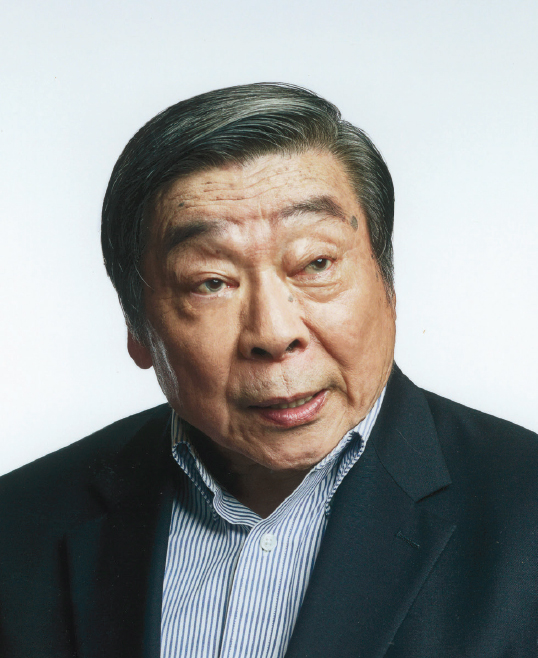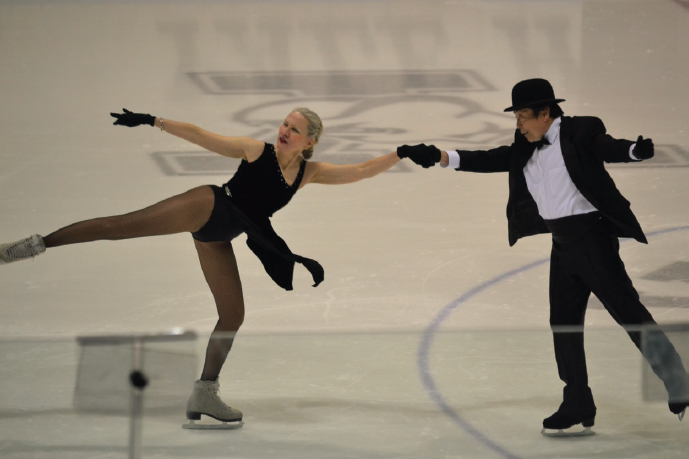TSO-PING MA
1945–2021
Elected in 2003
“For contributions to the development of CMOS gate dielectric technology.”
BY ERIC R. FOSSUM AND A. STEPHEN MORSE
TSO-PING MA, the Raymond J. Wean Professor of Electrical Engineering and Applied Physics and much-loved faculty member at Yale University since 1977, died April 6, 2021, at age 75. He was an award-winning electrical engineer whose work with semiconductors and microchips placed him at the cutting edge of worldwide electronic and technological research.
Born November 13, 1945, in Lanzhou, China, TP (as he was known) fled with his parents to Taiwan following the Chinese Civil War and earned his BS in electrical engineering (1968) at National Taiwan University. He came to Yale for his graduate education, earning his MS (1972) and PhD (1974), both in engineering and applied science.
He worked 2 years at IBM and then returned to Yale, where he eventually became acting chair (1988) and then chair (1991–95) of the Department of Electrical Engineering. As a professor of electrical engineering and of applied physics, his research and teaching focused on semiconductors, MOS interface physics, ionizing radiation and hot electron effects, advanced gate dielectrics, flash memory device physics, and ferroelectric thin films for memory applications.
He studied semiconductors with his mentor, Richard C. Barker, whose research spanned solid state science and technology and who founded the Yale Center for Microelectronic
Materials and Structures. Ma and Barker were the inaugural codirectors of the center and served in that capacity for a number of years starting in the mid-1980s. The two men operated a joint research operation and comentored many Yale graduate students. One of the authors (ERF, PhD 1984) recalls that “It was like an extended family, affectionately known as the Ma-Barker gang, and together they provided complementary insight and guidance for all of us.”
Beginning in the 1980s, Ma and his team studied the use of high-permittivity (high-k) silicon nitride for transistor scaling. The notion inspired the semiconductor industry and led to the adoption of advanced high-k dielectrics in today’s highly miniaturized integrated circuits. In the 1990s Ma and his team pioneered research on memory devices based on ferroelectric materials.
He was called by one of his colleagues “the locomotive in driving microelectronics research at Yale.” His seminal work on transistor gate dielectrics revolutionized the microelectronics industry, based on his engineering of the dielectric gate materials, which control the flow of electrons through a transistor. His discoveries allowed the transistors to be made extremely small—more transistors could be packed on an electronic chip, thereby increasing computing power.
One of Ma’s pathbreaking discoveries began with a visit at Yale to the molecular biology lab of his wife, Dr. Pin-fang Lin, where she was researching the effects of radiation on bacterial samples. Fascinated by the way radiation affected the clear glass, turning it gray, he suddenly wondered what it would do to silicon-based semiconductors. His research on the effects of radiation on silicon chips and semiconductors led to historic findings that aided US security and allowed longer lifespans for satellites.
In addition to his excellence in research and mentoring, Ma recognized the value of international research collaboration and encouraged students and faculty alike to develop a global vision and an innovative mindset. He established the Yale–Peking University Joint Center for Microelectronics and Nanotechnology and promoted academic exchanges
and partnerships between the two institutions. He was an honorary guest professor of Tienjin, Tsinghua, and Shandong Universities and a consultant to the NTU–Taiwan Semiconductor Manufacturing Company Research Center.
For research and contributions to the field of gate dielectrics and to the development of the microchip, he received the 2005 Andrew S. Grove Award, one of his many honors. In 2006 the Semiconductor Industry Association bestowed its annual University Researcher Award on him for his pioneering work in semiconductor technology. He received as well Yale’s Harding Bliss Prize in 1975, the Connecticut Yankee Ingenuity Award in 1991, two B.F. Goodrich National Collegiate Inventor’s Advisor Awards (1993, 1998), the Paul Rappaport Award of the IEEE Electron Devices Society in 1998, the Pan Wen-Yuan Outstanding Research Award (2005) for researchers of Chinese descent who have made theoretical innovations, and the 2008 Connecticut Medal of Technology.
He was a member of the National Academy of Engineering and the Connecticut Academy of Science and Engineering, a foreign member of the Chinese Academy of Sciences, and an academician of Taiwan’s Academia Sinica. He was a life fellow of IEEE, member of Sigma Xi, the Electrochemical Society, and Materials Research Society, and a life member of the American Physical Society. In 2016 he received an honorary doctorate from the National Chiao Tung University in Taiwan.
TP was appreciated by students, postdocs, and colleagues for his warmth, kindness, generosity, humor, welcoming smile, and mentorship. “To me,” said C.C. Wei, CEO of the Taiwan Semiconductor Manufacturing Company, “TP was more than an advisor. His guidance and wisdom had enormous influence on my career…. It is now up to each one of us to…help the next generation in ways worthy of his investment in us.” Other students characterized Ma as “life advisor, close friend, role model,” and “full of wisdom, solid on his rationales, frank in his technical judgments, and yet fully open minded to all points of view.” One said simply, “People love him.”
He was such a distinguished researcher that few might have imagined his avocation: he was an accomplished ice
skater. Anyone coming to Yale’s Ingalls Rink during a lunch skate or on a weekend when the Yale Figure Skating Club was practicing might have seen him making as many intricate configurations on the ice as he did in parallel over the years in his laboratory—configurations for which Yale University is deeply grateful.
TP was a loving husband to Pin-fang Lin during their 49 years of marriage, a devoted father to Mahau Ma and Jasmine Ma, and a playful grandfather to his four grandchildren.








